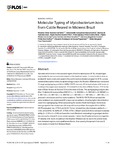Use este identificador para citar ou linkar para este item:
http://www.alice.cnptia.embrapa.br/alice/handle/doc/1061179Registro completo de metadados
| Campo DC | Valor | Idioma |
|---|---|---|
| dc.contributor.author | CARVALHO, R. C. T. | pt_BR |
| dc.contributor.author | VASCONCELLOS, S. E. G. | pt_BR |
| dc.contributor.author | ISSA, M. de A. | pt_BR |
| dc.contributor.author | SOARES FILHO, P. M. | pt_BR |
| dc.contributor.author | MOTA, P. M. P. C. | pt_BR |
| dc.contributor.author | ARAUJO, F. R. | pt_BR |
| dc.contributor.author | CARVALHO, A. C. da S. | pt_BR |
| dc.contributor.author | GOMES, H. M. | pt_BR |
| dc.contributor.author | SUFFYS, P. N. | pt_BR |
| dc.contributor.author | FIGUEIREDO, E. E. de S. | pt_BR |
| dc.contributor.author | PASCHOALIN, V. M. F. | pt_BR |
| dc.date.accessioned | 2017-01-19T11:11:11Z | pt_BR |
| dc.date.available | 2017-01-19T11:11:11Z | pt_BR |
| dc.date.created | 2017-01-19 | pt_BR |
| dc.date.issued | 2016 | pt_BR |
| dc.identifier.citation | PlOs ONE, v. 11, n. 9, p. 1-16, Sept. 2016. | pt_BR |
| dc.identifier.uri | http://www.alice.cnptia.embrapa.br/alice/handle/doc/1061179 | pt_BR |
| dc.description | Mycobacterium bovis is the causative agent of bovine tuberculosis (BTB), the pathogen responsible for serious economic impact on the livestock sector. In order to obtain data on isolated M. bovis strains and assist in the control and eradication program for BTB, a cross sectional descriptive molecular epidemiology study in the Brazilian Midwest was conducted. Through spoligotyping and 24-loci MIRU-VNTR methods, 37 clinical isolates of M. bovis circulating in the region were analyzed, 10 isolated from the state of Mato Grosso, 12 from the state of Mato Grosso do Sul and 15 from the state of Goiás. The spoligotyping analysis identified 10 distinct M. bovis profiles (SB0121 n = 14, SB0295 n = 6, SB0140 n = 6, SB0881 n = 3, SB1144 n = 2, SB1145 n = 2, SB0134 n = 1, SB1050 n = 1, SB1055 n = 1, SB1136 n = 1) grouped in six clusters and four orphan patterns. The MIRU-VNTR 24-loci grouped the same isolates in six clusters and 22 unique orphan patterns, showing higher discriminatory power than spoligotyping. When associating the results of both techniques, the isolates were grouped in five clusters and 24 unique M. bovis profiles. Among the 24-loci MIRUVNTR evaluated, two, ETR-A and QUB 11b loci, showed high discriminatory ability (h = > 0.50), while MIRU 16, MIRU 27, ETR-B, ETR-C, Mtub21 and QUB 26 loci showed moderate ability (h = 0.33 or h = 0.49) and were the most effective in evaluating the genotypic similarities among the clinical M. bovis isolate samples. Herein, the 29 patterns found amongst the 37 isolates of M. bovis circulating in the Brazilian Midwest can be due to the animal movement between regions,municipalities and farms, thus causing the spread of various M. bovis strains in herds from Midwest Brazil. | pt_BR |
| dc.language.iso | eng | eng |
| dc.rights | openAccess | eng |
| dc.title | Molecular typing of mycobacterium bovis from cattle reared in Midwest Brazil. | pt_BR |
| dc.type | Artigo de periódico | pt_BR |
| dc.date.updated | 2017-01-19T11:11:11Z | pt_BR |
| dc.subject.thesagro | Mycobacterium Bovis | pt_BR |
| dc.subject.nalthesaurus | Bovine tuberculosis | pt_BR |
| dc.subject.nalthesaurus | Molecular epidemiology | pt_BR |
| dc.subject.nalthesaurus | Cattle | pt_BR |
| dc.subject.nalthesaurus | Brazil | pt_BR |
| riaa.ainfo.id | 1061179 | pt_BR |
| riaa.ainfo.lastupdate | 2017-01-19 | pt_BR |
| dc.contributor.institution | RICARDO CÉSAR TAVARES CARVALHO, UFRJ; SIDRA EZIDIO GONÇALVES VASCONCELLOS, FIOCRUZ; MARINA DE AZEVEDO ISSA, LANAGRO/MAPA; PAULO MARTINS SOARES FILHO, LANAGRO/MAPA; PEDRO MOACYR PINTO COELHO MOTA, LANAGRO/MAPA; FLABIO RIBEIRO ARAUJO, CNPGC; ANA CAROLINA DA SILVA CARVALHO, UFRJ/UFMT; HARRISON MAGDINIER GOMES, FIOCRUZ; PHILIP NOEL SUFFYS, FIOCRUZ/LANAGRO/MAPA; EDUARDO EUSTÁQUIO DE SOUZA FIGUEIREDO, UFMT; VÂNIA MARGARET FLOSI PASCHOALIN, UFRJ. | pt_BR |
| Aparece nas coleções: | Artigo em periódico indexado (CNPGC)  | |
Arquivos associados a este item:
| Arquivo | Descrição | Tamanho | Formato | |
|---|---|---|---|---|
| MolecularTypingofmycobacterium.pdf | 1,88 MB | Adobe PDF |  Visualizar/Abrir |









